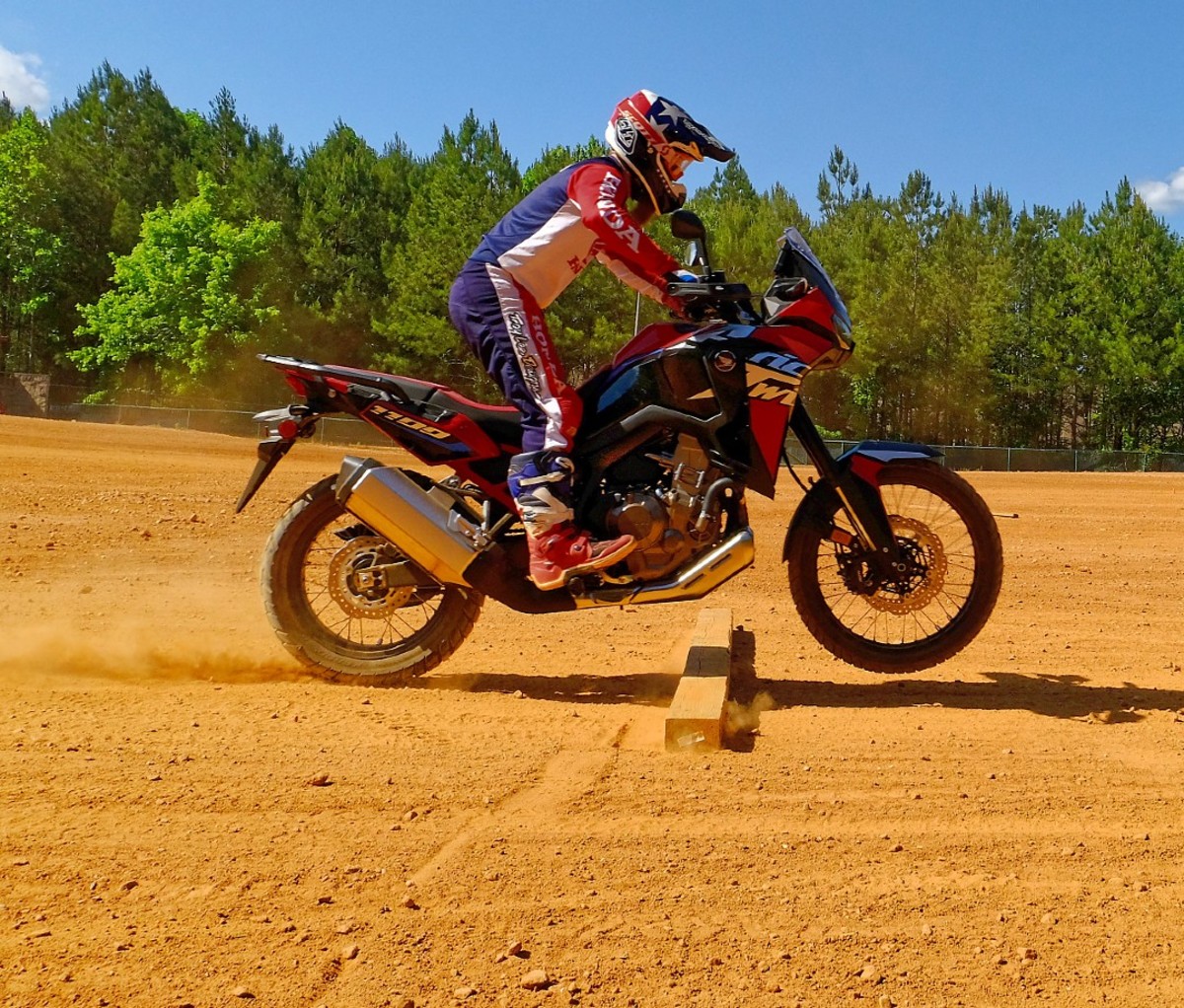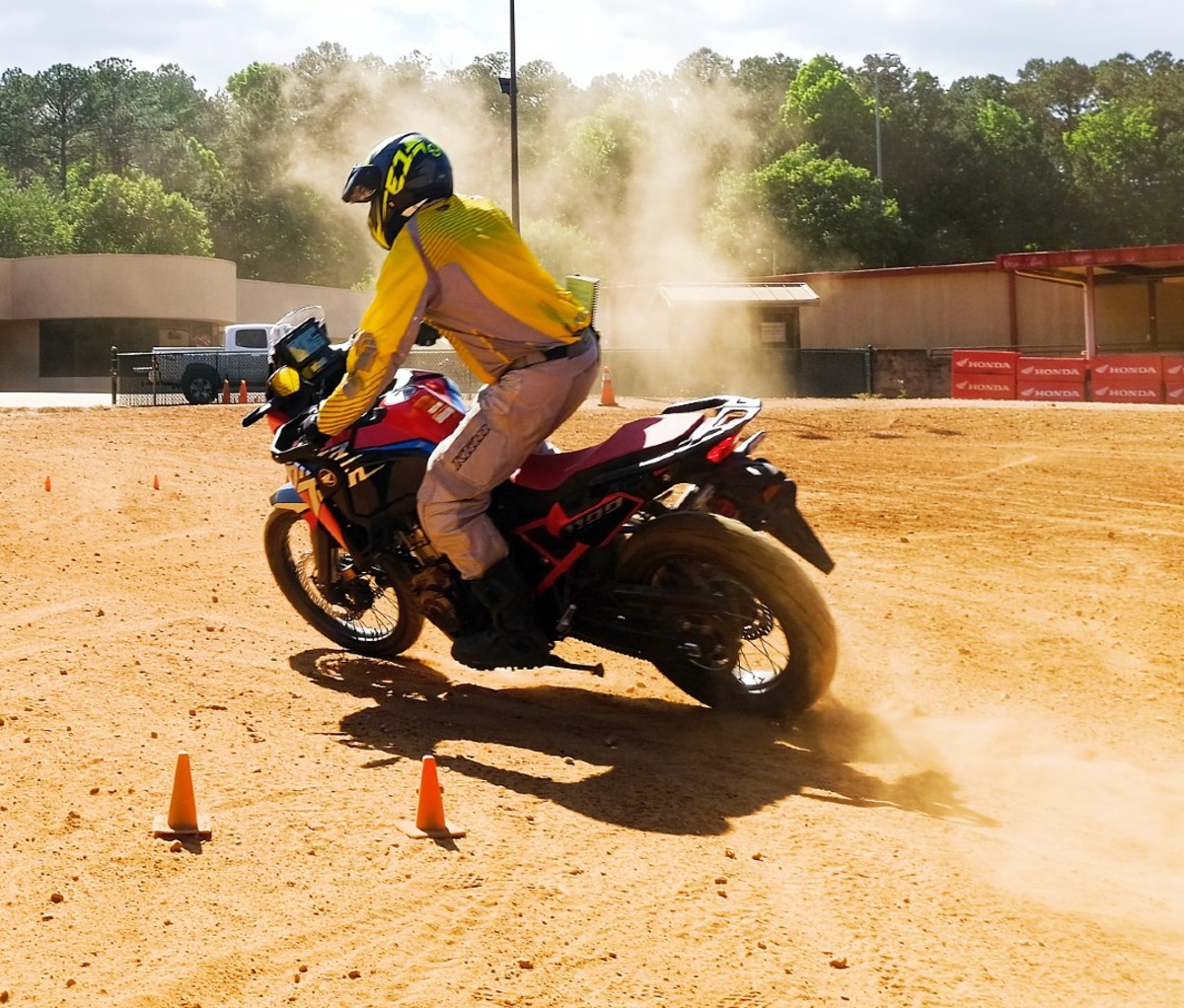So, you bought an adventure motorcycle. Sales of ADVs (also called dual sport or adventure bikes) were up 46 percent in 2020 vs. 2019, and 18.6 percent in 2021. The moto industry will tell you that the latter figure would be a lot higher, but it’s been impossible to build ADV bikes fast enough, because motorcycle makers haven’t had to ramp up production this steeply in over a decade—and, yes, parts, supply chain, and distribution issues have plagued this industry, too. Tangent aside, this means you need a motorcycle training course to stay safe while on-pavement and off.
What Is an ADV Bike?
ADV bikes have knobby tires; greater ground clearance; and a cockpit that’s configured for an upright riding position, where your arms are bent and your core and legs can stay engaged as you ride (vs., say, the “chopper” rider’s stance of high arms and outstretched legs). All of these ingredients mean the bike is ready to rock, at the very least, on dirt roads, and maybe on lumpy trails, too. Thing is, motorcycles, just like cars, handle exceptionally different off-pavement vs. on it. And unlike a car, you’re not surrounded by thousands of pounds of metal and airbags in case you do something unintended. The right response to this reality is simple: find a motorcycle training course near you.
Just like with every other sport you’ve learned as an adult—from learning to lift properly with a personal trainer to deciding it would be fun to learn how to ski or surf—the pros know what you don’t. The hack for riding is just like the hack for all other skills. Go back to school!
The Motorcycle Safety Foundation just inaugurated an Adventure Bike Ridercourse, a $175-$400 lesson plan that’s being taught in 12 states nationwide. We attended a class in Alpharetta, Georgia, which is the American HQ of Honda as well. While the one-day course won’t cure you of every bad habit you might have from lazily plying the street, it can teach you to ride with way more confidence off-pavement. Reducing your fear factor is what you need to let you and your bike reach full potential. Here are three key lessons we learned during our motorcycle training course. This only scratches the surface, but they should give you an idea of what to add to your toolkit to improve your confidence and safety.

Your Eyes Control Your Body
Pick a sport. Any sport. It doesn’t matter if it’s surfing or mountain biking: Your body is going to go where you look. At Adventure Bike School, we started out riding a cone course very slowly, weaving in and out of them. Eventually, instructors moved the cones even closer together, which starts to get very challenging on a heavier ADV bike. But one crucial tip was to see the cone you were trying to ride around, then look up. If you focused on the cone, you’d pretty much be guaranteed to squish it. If you looked at where you wanted to ride to, beyond the cone, you almost couldn’t help but line up the bike correctly.
Mind you, emulating this in real life, on a route you’ve never plied, with uneven surfaces that are wet, dry, slick, loose, and who knows what else is undeniably harder. But looking at where you want to go, never directly down, helps a ton.
Steer With Your Toes and Squeeze With Your Knees
Imagine turning on skis without paying any attention to your feet. It might work, but certainly it’s not going to be very fluid. Riding a motorcycle, especially off-road, requires using the weight you have, which is usually less than the weight of the bike, to your advantage. One way to do this is to manipulate all points of contact and enhance them, so your body is in a more athletic position. Your nose, knees, and toes should be in rough alignment, which is the “ready” position of almost any sport, with your knees bent and, in this case, squeezing inward against the gas tank. Your elbows should be up, which forces your wrists to roll forward, where you have more control of the handlebar (and also, if you roll over a rock or stump, you want your wrists up, not behind the bar, to protect them).
The slower the turn, the more you have to exaggerate some of this. For instance, you’d have to drive the outside knee into the gas tank while rotating and pressing down on the foot peg on the inside arc of the turn to initiate that rotation, then start to get your ass on the outside edge of your seat.
By the way: All of this is easier to execute while standing, because it gives you more engagement with your butt and quads, the strongest muscles in your body, which can enable you to be quicker, literally, on your toes, to engage with the terrain.

Skid to Corner
Have you been to rally driving school? If you have, then you know the shortest distance between two points is seldom a beautifully described curve, like it can be on a paved racecourse. In dirt, you have to zig and zag to change direction. And on a motorcycle, unlike in a car, you can individually brake at the rear tire, and leave the front brake out of the equation. Do this with just a little counter lean with your body and counter steer with your hands and you can pop the back end of the bike free, which if you think about it, pitches the bike in a new direction.
That’s the idea. If you abruptly come across a downed tree or a boulder in your path you can’t go over, bust loose the back wheel. It allows you to send the bike sideways. Next, give it a quick throttle blast to regain momentum and pass around the obstacle. Then, break the rear wheel loose again in the opposite direction to circle around the obstacle.
The passage describes more of a V rather than a U-shaped turn, and when you practice, you’re basically linking a series of Zs. Do this in an open field with cones and it’s not very scary, and even pretty fun. This move also teaches you the fine art of counter-balancing the bike by shifting your body weight side to side, with the aim of always keeping the bike fairly neutral, and adjusting your torso as a weight against the momentum of the machine.
All of these may sound easy, but the key, as with any sport, is to practice on safe terrain that’s not too intimidating. Repetition leads to greater confidence, and the ability to apply some of these motorcycle training course techniques in “real life,” where they truly come in handy, can be the difference between struggling in the mud or sand and truly falling in love with the extra capabilities of your adventure bike.
Learn Morefrom Men's Journal https://ift.tt/07nLy2p





0 comments